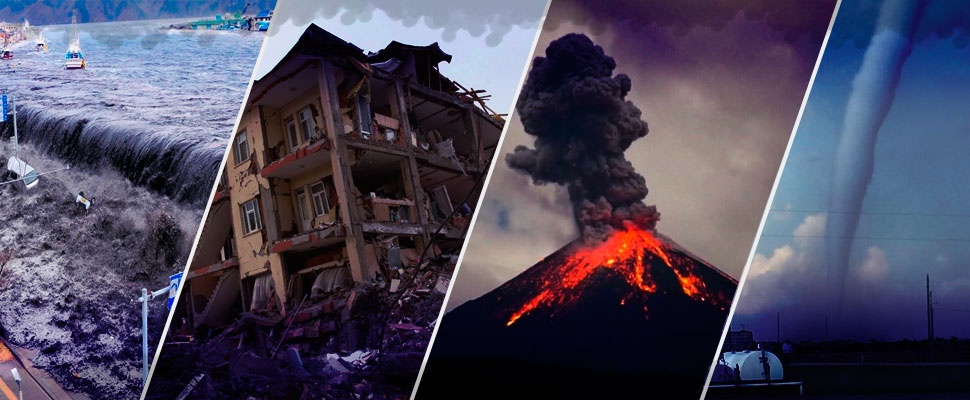This is how the UN seeks to minimize the risks of natural disasters
This October 13th we celebrate the International Day for Disaster Reduction

On October 13, the world celebrates the International Day for Disaster Reduction. This is a date that seeks to minimize risks that result in extreme poverty, hundreds of thousands of deaths, shortages, famine and about 520 billion dollars in losses worldwide. It is about the affectations that the disasters leave annually and that is why the world commemorates this date.
Leer en español: Así es como la ONU busca minimizar los riesgos por desastres naturales
In 1989, the UN General Assembly designated this day with the purpose of raising awareness among governments and public opinion so that they can take measures aimed at minimizing risks. Disasters, for example, many of which have been aggravated by climate change, have a negative impact on sustainable development and the desired results.
This is how in 2016 the Sendai Seven campaign was launched, with the aim of promoting seven goals of the 2015-2030 Sendai Framework to reduce the dangers caused by natural disasters.
With this initiative, the UN seeks that nations reduce significantly the global mortality that the disasters caused by 2030, which is about 100 thousand people due to natural catastrophe, a similar figure in the case of those affected. Another item to decrease are economic losses, damage to vital infrastructure for humanity, such as hospitals, schools and basic services.
The fifth point of the Sendai is focused on increasing the number of countries with disaster risk reduction strategies, point to be evaluated in 2020. Other objectives are to improve international cooperation for developing countries and increase early warning systems on multiple threats .
It may interest you: Space debris: Know the satellite that could clean the space
"Economic losses from disasters in low and middle-income countries are undermining efforts to achieve the Sustainable Development Goals and deprive-governments of funds to spend on health, education, social protection and other important public needs," said Mami Mizutori, Assistant Secretary-General and Special Representative of the Secretary-General for Disaster Risk Reduction, in a report published by the UN.
How is it being implemented?
The Dominican Republic, Honduras and Guatemala were the three countries that presented last June to the UN, in Cartagena, Colombia, the progress made under the Sendai Seven plan.
Cinthia Borjas Valenzuela, director of the municipal office of the mayor of Tegucigalpa, Honduras, and coordinator of the municipal unit of comprehensive risk management, said at the meeting that there are about 960 neighborhoods and neighborhoods of which 32% are vulnerable before landslides and floods.
"We are being very creative in that scheme as a city, a city with many problems of poverty, crime, etc. We have to be very creative to make it operational through interesting financing," Borjas told the UN, confirming that the Sendai is like the executing arm of a municipal risk management policy.
You can also read: These are the real environmental impacts of biofuels
Meanwhile, Santo Domingo, Dominican Republic, has more powerful enemies: hurricanes. That is why the intentions in risk reduction have focused on it.
"The heavy rains affected us in infrastructures, since the municipality of Santo Domingo East does not have a sewerage system and what is done are filtering wells," said Mayor Alfredo Martínez, who in turn confirmed that in the reduction equipment of risks in the city have a WhatsApp group that does not sleep to coordinate how they will cope with any emergency or risk that looms.
For its part, Guatemala has spent 15 years in disaster risk management. "Based on this, an action plan was developed with 93 activities that we must develop and identified the five essentials that we want to prioritize and work on, without forgetting the rest," said Douglas Fernando Rodas Mérida, coordinator of the emergency center of the municipality.
LatinAmerican Post | Jorge Hernández
Translated from "Así es como la ONU busca minimizar los riesgos por desastres naturales"
Listen this article





